
The Climate Change Pact agreed by leaders at the end of COP26 in Glasgow went further than many pessimists had forecast, but not far enough to meet the goal of keeping global warming to 1.5°C above pre-industrial levels. The Pact states that:
limiting global warming to 1.5°C requires rapid, deep and sustained reductions in global greenhouse gas emissions, including reducing global carbon dioxide emissions by 45 per cent by 2030 relative to the 2010 level and to net zero around mid-century, as well as deep reductions in other greenhouse gases.
So how far would the commitments made in Glasgow restrict global warming and what actions need to be put in place to meet these commitments?
Short-term commitments and long-term goals
According to Climate Action Tracker, the short-term commitments to action that countries set out would cause global warming of 2.4°C by the end of the century, the effects of which would be calamitous in terms of rising sea levels and extreme weather.
However, long-term commitments to goals, as opposed to specific actions, if turned into specific actions to meet the goals would restrict warming to around 1.8°C by the end of the century. These long-term goals include reaching net zero emissions by certain dates. For the majority of the 136 countries agreeing to reach net zero, the date they set was 2050, but for some developing countries, it was later. China, Brazil, Indonesia, Russia, Nigeria, Sri Lanka and Saudi Arabia, for example, set a date of 2060 and India of 2070. Some countries set an earlier target and others, such as Benin, Bhutan, Cambodia, Guyana, Liberia and Madagascar, claimed they had already reached zero net emissions.
Despite these target dates, Climate Action Tracker argues that only 6 per cent of countries pledging net zero have robust policies in place to meet the targets. The problem is that actions are required by firms and individuals. They must cut their direct emissions and reduce the consumption of products whose production involved emissions.
 Governments can incentivise individuals and firms through emissions and product taxes, through carbon pricing, through cap-and-trade schemes, through subsidies on green investment, production and consumption, through legal limits on emissions, through trying to change behaviour by education campaigns, and so on. In each case, the extent to which individuals and firms will respond is hard to predict. People may want to reduce global warming and yet be reluctant to change their own behaviour, seeing themselves as too insignificant to make any difference and blaming big business, governments or rich individuals. It is important, therefore, for governments to get incentive mechanisms right to achieve the stated targets.
Governments can incentivise individuals and firms through emissions and product taxes, through carbon pricing, through cap-and-trade schemes, through subsidies on green investment, production and consumption, through legal limits on emissions, through trying to change behaviour by education campaigns, and so on. In each case, the extent to which individuals and firms will respond is hard to predict. People may want to reduce global warming and yet be reluctant to change their own behaviour, seeing themselves as too insignificant to make any difference and blaming big business, governments or rich individuals. It is important, therefore, for governments to get incentive mechanisms right to achieve the stated targets.
Let us turn to some specific targets specified in the Climate Change Pact.
Phasing out fossil fuel subsidies
Paragraph 20 of the Climate Change Pact
Calls upon Parties to accelerate … efforts towards the … phase-out of inefficient fossil fuel subsidies, while providing targeted support to the poorest and most vulnerable in line with national circumstances and recognizing the need for support towards a just transition.
Production subsidies include tax breaks or direct payments that reduce the cost of producing coal, oil or gas. Consumption subsidies cut fuel prices for the end user, such as by fixing the price at the petrol pump below the market rate. They are often justified as a way of making energy cheaper for poorer people. In fact, they provide a bigger benefit to wealthier people, who are larger users of energy. A more efficient way of helping the poor would be through benefits or general tax relief. Removing consumption subsidies in 32 countries alone would, according to International Institute for Sustainable Development, cut greenhouse gas emission by an average of 6 per cent by 2025.
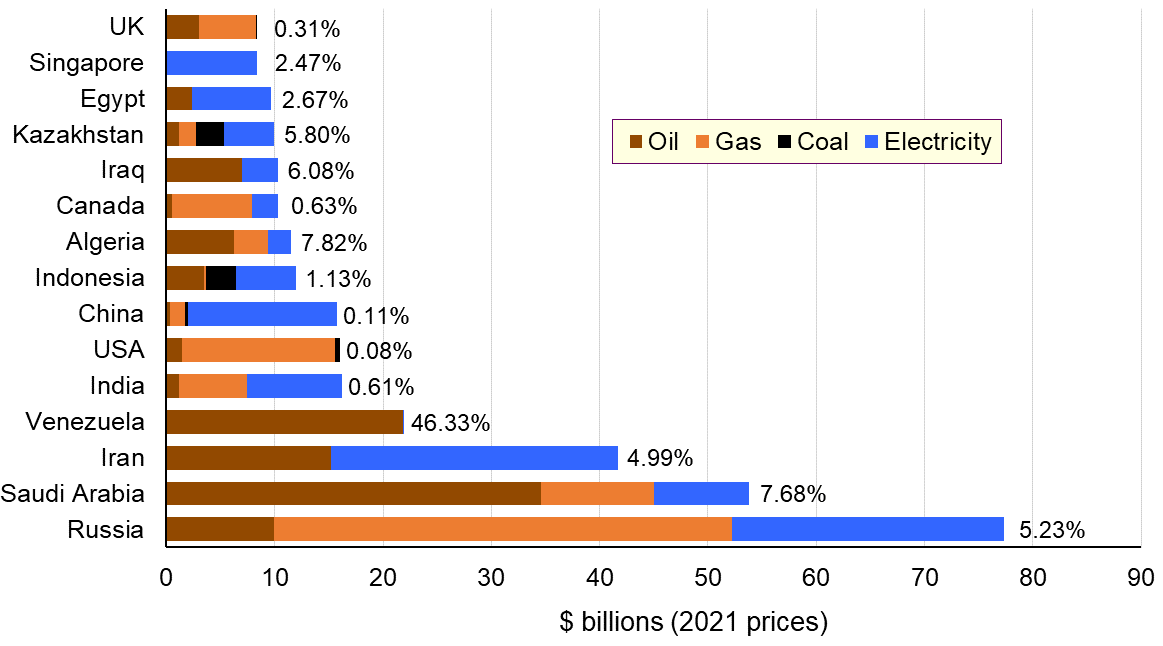 The chart shows the 15 countries providing the largest amount of support to fossil fuel industries in 2020 (in 2021 prices). The bars are in billions of dollars and the percentage of GDP is also given for each country. Subsidies include both production and consumption subsidies. (Click here for a PowerPoint of the chart.) In addition to the direct subsidies shown in the chart, there are the indirect costs of subsidies, including pollution, environmental destruction and the impact on the climate. According to the IMF, these amounted to $5.4 trillion in 2020.
The chart shows the 15 countries providing the largest amount of support to fossil fuel industries in 2020 (in 2021 prices). The bars are in billions of dollars and the percentage of GDP is also given for each country. Subsidies include both production and consumption subsidies. (Click here for a PowerPoint of the chart.) In addition to the direct subsidies shown in the chart, there are the indirect costs of subsidies, including pollution, environmental destruction and the impact on the climate. According to the IMF, these amounted to $5.4 trillion in 2020.
But getting countries to agree on a path to cutting subsidies, when conditions vary enormously from one country to another, proved very difficult.
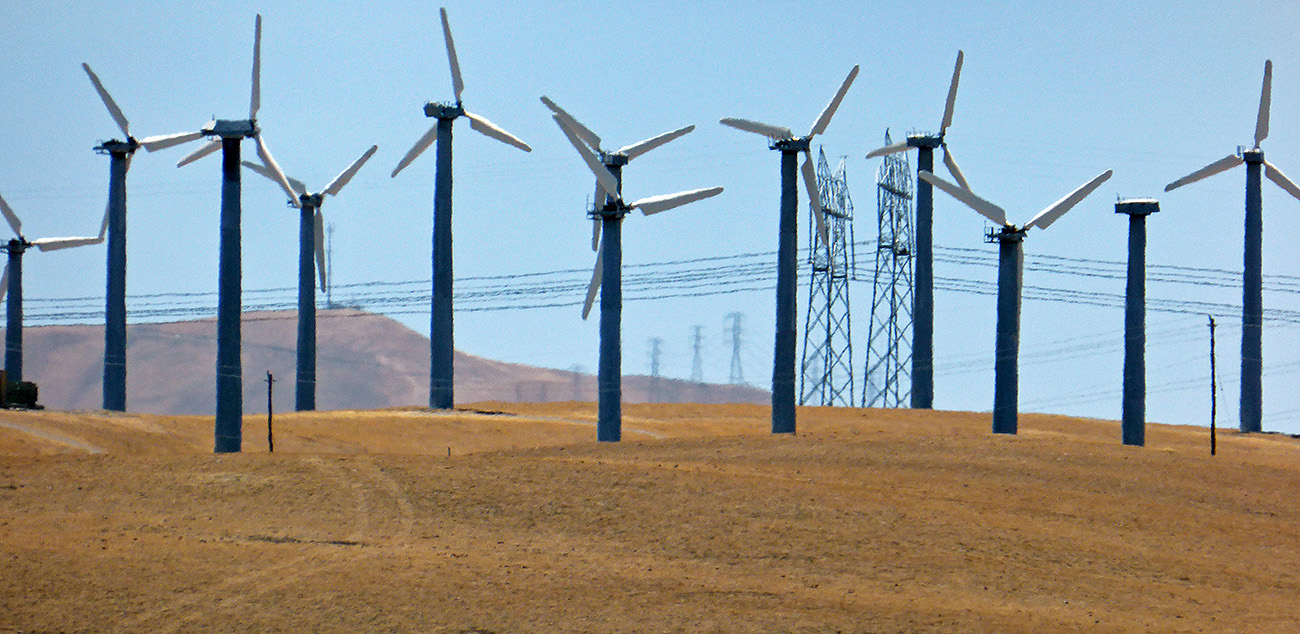 The first draft of the conference agreement called for countries to ‘to accelerate the phasing-out of coal and subsidies for fossil fuels’. But, after objections from major coal producing countries, such as China, India and Australia, this was weakened to calling on countries to accelerate the shift to clean energy systems ‘by scaling up the deployment of clean power generation and energy efficiency measures, including accelerating efforts towards the phasedown of unabated coal power and phase-out of inefficient fossil fuel subsidies’. (‘Unabated’ coal power refers to power generation with no carbon capture.) Changing ‘phasing-out’ to ‘the phasedown’ caused consternation among many delegates who saw this as a substantial weakening of the drive to end the use of coal.
The first draft of the conference agreement called for countries to ‘to accelerate the phasing-out of coal and subsidies for fossil fuels’. But, after objections from major coal producing countries, such as China, India and Australia, this was weakened to calling on countries to accelerate the shift to clean energy systems ‘by scaling up the deployment of clean power generation and energy efficiency measures, including accelerating efforts towards the phasedown of unabated coal power and phase-out of inefficient fossil fuel subsidies’. (‘Unabated’ coal power refers to power generation with no carbon capture.) Changing ‘phasing-out’ to ‘the phasedown’ caused consternation among many delegates who saw this as a substantial weakening of the drive to end the use of coal.
Another problem is in defining ‘inefficient’ subsidies. Countries are likely to define them in a way that suits them.
The key question was the extent to which countries would actually adopt such measures and what the details would be. Would they be strong enough? This remained to be seen.
As an article in the journal, Nature, points out:
There are three main barriers to removing production subsidies … First, fossil-fuel companies are powerful political groups. Second, there are legitimate concerns about job losses in communities that have few alternative employment options. And third, people often worry that rising energy prices might depress economic growth or trigger inflation.
The other question with the phasing out of subsidies is how and how much would there be ‘targeted support to the poorest and most vulnerable in line with national circumstances’.
Financial support for developing countries
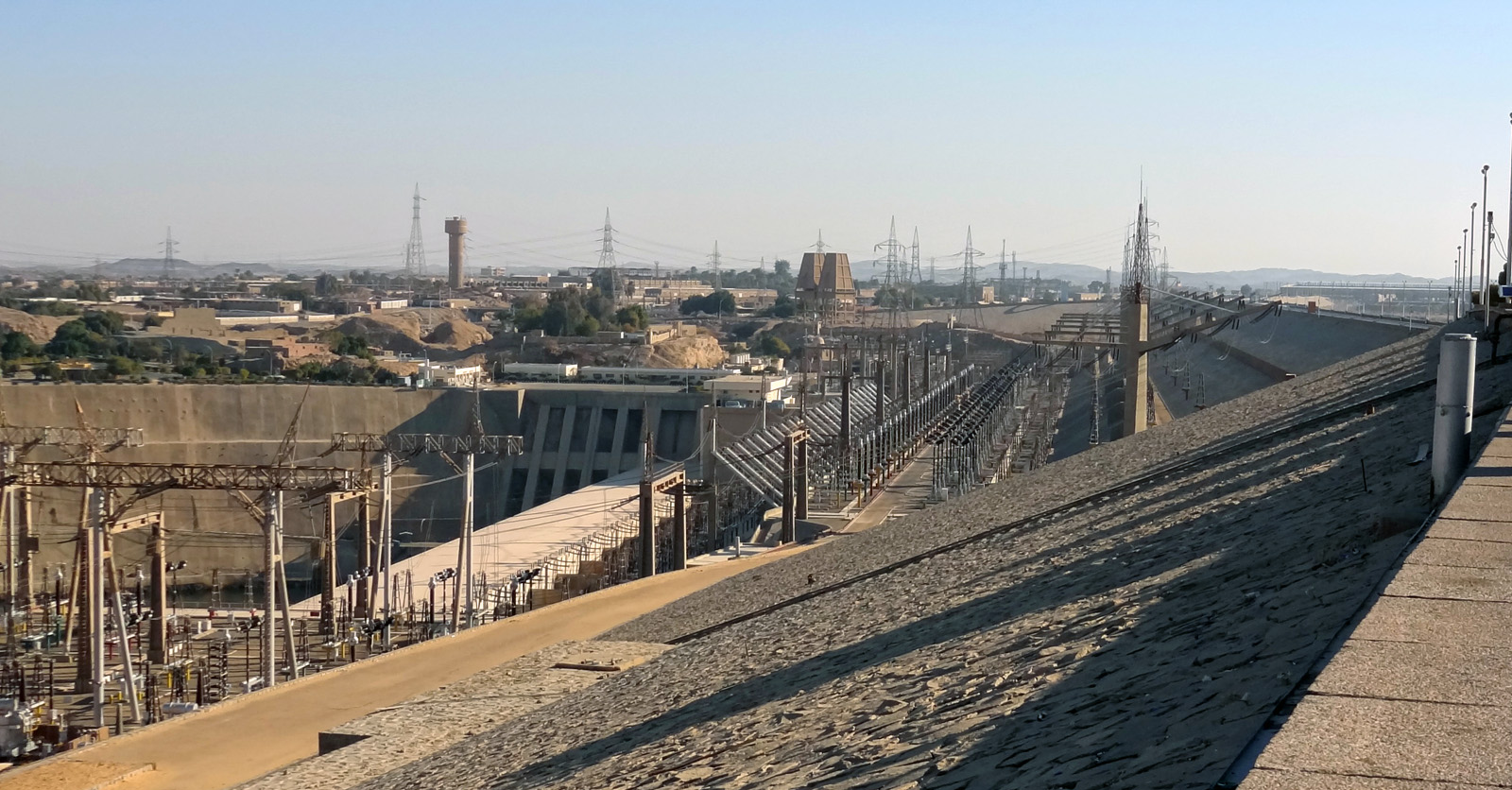 Transitioning to a low-carbon economy and investing in measures to protect people from rising sea levels, floods, droughts, fires, etc. costs money. With many developing countries facing serious financial problems, especially in the light of measures to support their economies and healthcare systems to mitigate the effects of COVID-19, support is needed from the developed world.
Transitioning to a low-carbon economy and investing in measures to protect people from rising sea levels, floods, droughts, fires, etc. costs money. With many developing countries facing serious financial problems, especially in the light of measures to support their economies and healthcare systems to mitigate the effects of COVID-19, support is needed from the developed world.
In the COP21 Paris Agreement in 2015, developed countries pledged $100 billion by 2020 to support mitigation of and adaptation to the effects of climate change by developing countries. But the target was not reached. The COP26 Pact urged ‘developed country Parties to fully deliver on the $100 billion goal urgently and through to 2025’. It also emphasised the importance of transparency in the implementation of their pledges. The proposal was also discussed to set up a trillion dollar per year fund from 2025, but no agreement was reached.
It remains to be seen just how much support will be given.
Then there was the question of compensating developing countries for the loss and damage which has already resulted from climate change. Large historical polluters, such as the USA, the UK and various EU countries, were unwilling to agree to a compensation mechanism, fearing that any recognition of culpability could make them open to lawsuits and demands for financial compensation.
Other decisions
- More than 100 countries at the meeting agreed to cut global methane emissions by at least 30 per cent from 2020 levels by 2030. Methane is a more powerful but shorter-living greenhouse gas than carbon. It is responsible for about a third of all human-generated global warming. China, India and Russia, however, did not sign up.
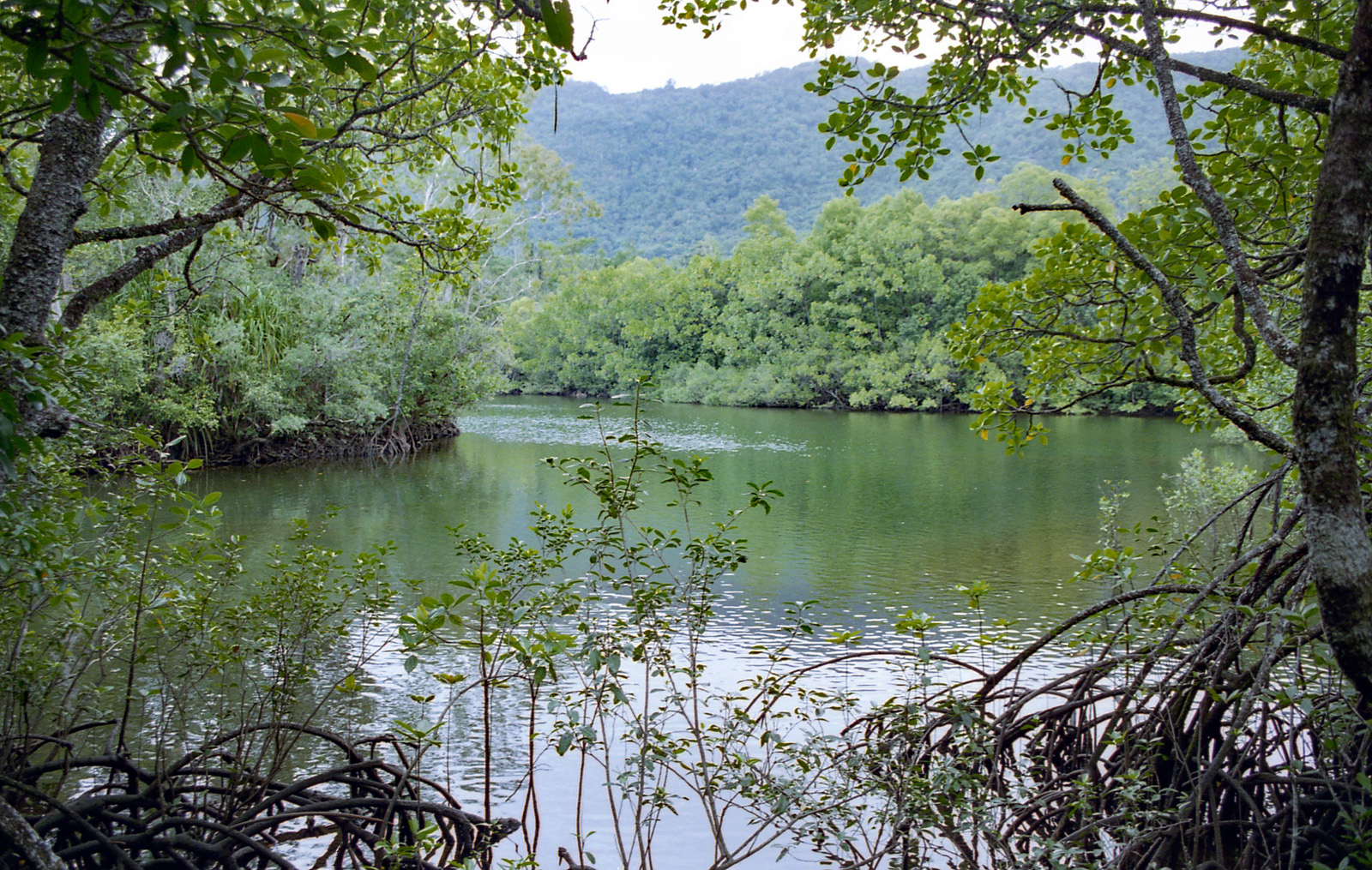 Again, more than 100 countries agreed to stop deforestation by 2030. These countries include Indonesia and Brazil, which has been heavily criticised for allowing large parts of the Amazon rainforest to be cleared for farming, such that the Amazon region in recent years has been a net emitter of carbon from the felling and burning of trees. The pledge has been met with considerable cynicism, however, as it unclear how it will be policed. Much of the deforestation around the world is already illegal but goes ahead anyway.
Again, more than 100 countries agreed to stop deforestation by 2030. These countries include Indonesia and Brazil, which has been heavily criticised for allowing large parts of the Amazon rainforest to be cleared for farming, such that the Amazon region in recent years has been a net emitter of carbon from the felling and burning of trees. The pledge has been met with considerable cynicism, however, as it unclear how it will be policed. Much of the deforestation around the world is already illegal but goes ahead anyway.- A mechanism for trading carbon credits was agreed. This allows countries which plant forests or build wind farms to earn credits. However, it may simply provide a mechanism for rich countries and businesses to keep emitting as usual by buying credits.
- Forty-five countries pledged to invest in green agricultural practices to make farming more sustainable.
- Twenty-two countries signed a declaration to create zero-emission maritime shipping routes.
- The USA and China signed a joint declaration promising to boost co-operation over the next decade on various climate actions, including reducing methane emissions, tackling deforestation and regulating decarbonisation.
 Blah, blah, blah or real action?
Blah, blah, blah or real action?
Many of the decisions merely represent targets. What is essential is for countries clearly to spell out the mechanisms they will use for achieving them. So far there is too little detail. It was agreed, therefore, to reconvene in a year’s time at COP27 in Egypt. Countries will be expected to spell out in detail what actions they are taking to meet their emissions targets and other targets such as ending deforestation and reducing coal-fired generation.
Articles
- COP26 ended with the Glasgow Climate Pact. Here’s where it succeeded and failed
CNN, Angela Dewan and Amy Cassidy (14/11/21)
- Good COP, Bad COP: Separating heat from light at the climate summit
Ing, Samuel Abettan, Gerben Hieminga and Coco Zhang (15/11/21)
- COP26: What was agreed at the Glasgow climate conference?
BBC News (15/11/21)
- Five Things You Need to Know About The New Glasgow Climate Pact
The Conversation, Simon Lewis and Mark Maslin (13/11/21)
- Infographic: What has your country pledged at COP26?
Aljazeera, Hanna Duggal (14/11/21)
- Cop26: world on track for disastrous heating of more than 2.4C, says key report
The Guardian, Fiona Harvey (9/11/21)
- Cop26 took us one step closer to combating the climate crisis
The Guardian, Christiana Figueres (15/11/21)
- After the failure of Cop26, there’s only one last hope for our survival
The Guardian, George Monbiot (14/11/21)
- Why fossil fuel subsidies are so hard to kill
Nature, Jocelyn Timperley (20/10/21)
- The COP26 blah blah blah detector
Rappler, Elpidio Peria (16/11/21)
Podcasts
Videos
Report
Document
Questions
- What were the main achievements of COP26?
- What were the main failings of COP26?
- How can people be incentivised to reduce their direct and indirect greenhouse gas emissions?
- How is game theory relevant to understanding the difficulties in achieving global net zero emissions?
- Should developing countries be required to give up coal power?
- If the world is to achieve net zero greenhouse gas emissions, should all countries achieve net zero or should some countries achieve net negative emissions to allow others to continue with net positive emissions (albeit at a lower level)?
 Many economists argue that the most effective policy for dealing with climate change is carbon pricing. This reduces greenhouse gas (GHG) emissions in a way that minimises the costs to the economy.
Many economists argue that the most effective policy for dealing with climate change is carbon pricing. This reduces greenhouse gas (GHG) emissions in a way that minimises the costs to the economy.
For the policy to work effectively it is important that the price per tonne of CO2 equivalent (CO2e) does not vary with the activity that causes the emissions. In other words, whether you drive a car, heat your house using gas or travel by air, the GHGs you create need to be priced at a unified rate.
Governments can introduce carbon pricing in two different ways – cap-and-trade schemes and carbon taxes.
With a cap-and-trade policy, emission allowances are either issued or sold to the organisations covered by the scheme. They must accumulate enough of these allowances to match the actual level of emissions they produce or pay a large fine. After the initial allocation, allowances can be bought and sold in a secondary market and prices can be quite volatile.
With a carbon tax, the government directly sets the price of GHGs through the tax rate but has less control over the quantity of emissions.
Policy in the UK
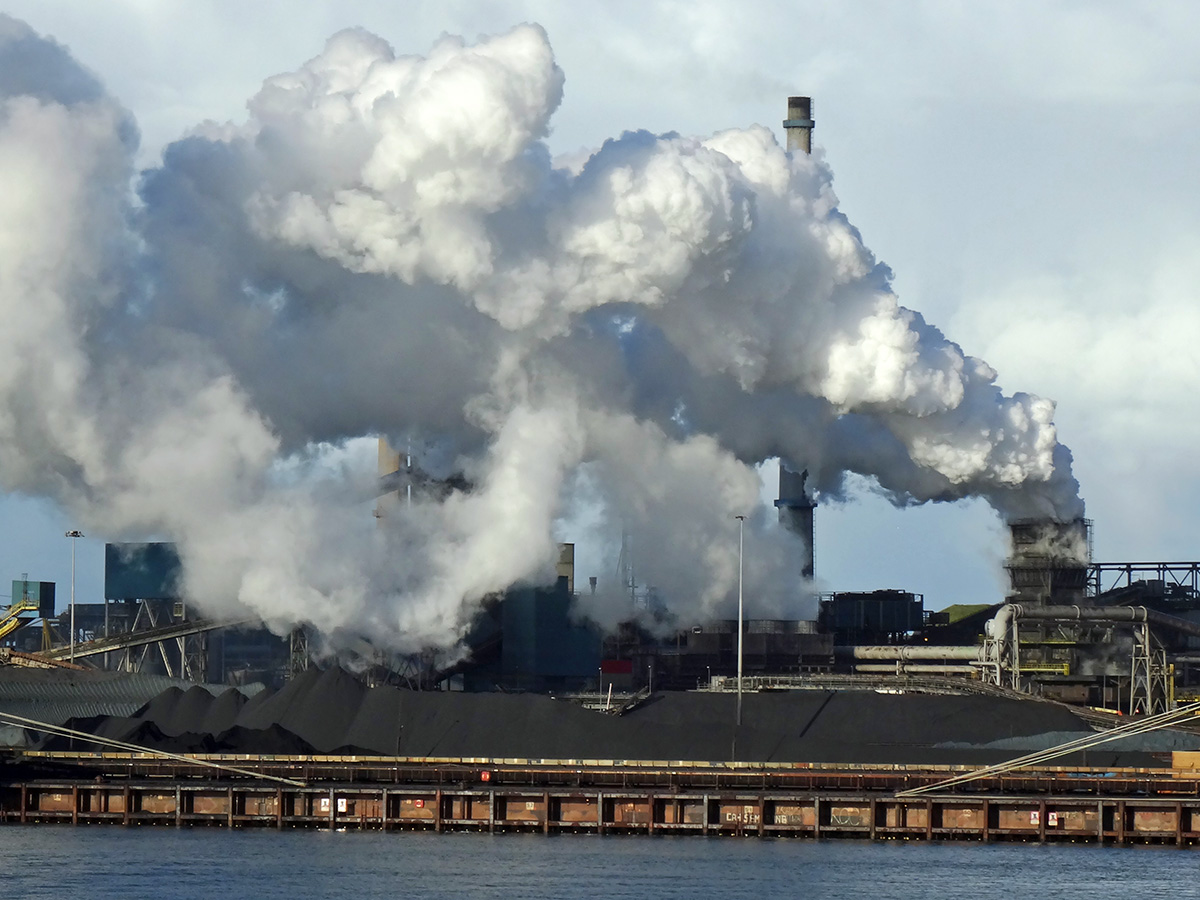 The UK Emissions Trading Scheme – an example of a cap-and-trade scheme – clearly places a price on GHG emissions. As this price is determined by market forces it can vary on a daily basis. The scheme applies to electricity generation and other energy-intensive industries that account for approximately 30 per cent of all emissions.
The UK Emissions Trading Scheme – an example of a cap-and-trade scheme – clearly places a price on GHG emissions. As this price is determined by market forces it can vary on a daily basis. The scheme applies to electricity generation and other energy-intensive industries that account for approximately 30 per cent of all emissions.
Although the UK does not have a specific carbon tax, it does have a number of different taxes that have an impact on the environment. Some of these have stated environmental objectives (e.g. the Climate Change Levy) while the main rationale for others is to raise revenue (fuel duty).
The tax rates are typically set on the output or consumption of the good rather than on emissions. For example, the Climate Change Levy applies to businesses’ use of electricity, gas and coal rather than the emissions the energy generates. Fuel duty depends on the amount of petrol consumed rather than the emissions the burning of that fuel generates. Clearly, emissions will tend to rise in proportion to the consumption/production of the good, but the relationship will not be precise.
The structure of VAT also influences emissions. The standard rate of VAT in the UK is 20 per cent. However, a lower level is applied to some goods/services that produce significant emissions. For example, the rate on household consumption of gas is 5 per cent while commercial passenger flights are zero rated. These lower tax rates are an implicit subsidy for the people who consume these goods/services. It makes them cheaper relative to the price of other goods.
Impact of the policies
Researchers from the Institute for Fiscal Studies have recently tried to analyse the impact of this complex range of policies on the price of carbon. The results indicate wide variations depending on the activity that causes the emissions.
One of the most significant differences is between gas and electricity. For example, non-energy-intensive businesses pay a price of £229.10 per tonne of CO2e from electricity generation but only £30.50 per tonne from burning gas. The response to the incentives this creates is unsurprising. One of the biggest contributing factors to the fall in territorial emissions in the UK has come from the decarbonisation of electricity supply: i.e. the switch away from coal-fired generation.
 The impact of government policy on UK households creates quite perverse incentives. Because of the lower rates of VAT, families receive an implicit subsidy of £24 per tonne CO2e when they use gas to heat their homes. When they use electricity, the source of energy that generates less emissions, they face a positive price of £137 per tonne of CO2e. Once again, the response to these incentives is unsurprising. Household emissions only fell by a relatively small amount between 1990 and 2018 because of the continued use of gas for heating and cooking.
The impact of government policy on UK households creates quite perverse incentives. Because of the lower rates of VAT, families receive an implicit subsidy of £24 per tonne CO2e when they use gas to heat their homes. When they use electricity, the source of energy that generates less emissions, they face a positive price of £137 per tonne of CO2e. Once again, the response to these incentives is unsurprising. Household emissions only fell by a relatively small amount between 1990 and 2018 because of the continued use of gas for heating and cooking.
Unsurprisingly many commentators have referred to carbon pricing in the UK as a confusing mess and have called for a unified rate across all activities to minimise the costs to the economy. Another important issue is the level at which a new unified rate is set. Some research by the Department for Business, Energy and Industrial Strategy suggests that the figure would have to be set between £122 and £36 per tonne of CO2e in order for the UK to reach its target of net zero emissions by 2050.
A higher unified rate would also create another problem – the distributional impact. Poorer households spend a much greater share of their income on electricity, heating and food and so would be disproportionately affected by the policy. For the policy to be politically acceptable, the government will need to find an effective way to compensate these groups.
Articles
Report
Questions
- Outline the difference between territorial and consumption emissions.
- Using the concepts of rivalry and excludability, explain why GHGs and the climate change they cause are an example of market failure.
- Discuss the main differences between cap-and trade schemes and carbon emission taxes.
- Explain why a unified carbon price would minimise the costs to the economy of reducing the level of GHG emissions.
- Discuss some of the potential limitations of introducing carbon pricing and explain why some countries are considering the implementation of a Carbon Border Adjustment mechanism.
 The development of open-source software and blockchain technology has enabled people to ‘hack’ capitalism – to present and provide alternatives to traditional modes of production, consumption and exchange. This has enabled more effective markets in second-hand products, new environmentally-friendly technologies and by-products that otherwise would have been negative externalities. Cryptocurrencies are increasingly providing the medium of exchange in such markets.
The development of open-source software and blockchain technology has enabled people to ‘hack’ capitalism – to present and provide alternatives to traditional modes of production, consumption and exchange. This has enabled more effective markets in second-hand products, new environmentally-friendly technologies and by-products that otherwise would have been negative externalities. Cryptocurrencies are increasingly providing the medium of exchange in such markets.
In a BBC podcast, Hacking Capitalism, Leo Johnson, head of PwC’s Disruption Practice and younger brother of Boris Johnson, argues that various changes to the way capitalism operates can make it much more effective in improving the lives of everyone, including those left behind in the current world. The changes can help address the failings of capitalism, such as climate change, environmental destruction, poverty and inequality, corruption, a reinforcement of economic and political power and the lack of general access to capital. And these changes are already taking place around the world and could lead to a new ‘golden age’ for capitalism.
 The changes are built on new attitudes and new technologies. New attitudes include regarding nature and the land as living resources that need respect. This would involve moving away from monocultures and deforestation and, with appropriate technologies (old and new), could lead to greater output, greater equality within agriculture and increased carbon absorption. The podcast gives examples from the developing and developed world of successful moves towards smaller-scale and more diversified agriculture that are much more sustainable. The rise in farmers’ markets provides an important mechanism to drive both demand and supply.
The changes are built on new attitudes and new technologies. New attitudes include regarding nature and the land as living resources that need respect. This would involve moving away from monocultures and deforestation and, with appropriate technologies (old and new), could lead to greater output, greater equality within agriculture and increased carbon absorption. The podcast gives examples from the developing and developed world of successful moves towards smaller-scale and more diversified agriculture that are much more sustainable. The rise in farmers’ markets provides an important mechanism to drive both demand and supply.
In the current model of capitalism there are many barriers to prevent the poor from benefiting from the system. As the podcast states, there are some 2 billion people across the world with no access to finance, 2.6 billion without access to sanitation, 1.2 billion without access to power – a set of barriers that stops capitalism from unlocking the skills and productivity of the many.
 These problems were made worse by the response to the financial crisis of 2007–8, when governments chose to save the existing model of capitalism by propping up financial markets through quantitative easing, which massively inflated asset prices and aggravated the problem of inequality. They missed the opportunity of creating money to invest in alternative technologies and infrastructure.
These problems were made worse by the response to the financial crisis of 2007–8, when governments chose to save the existing model of capitalism by propping up financial markets through quantitative easing, which massively inflated asset prices and aggravated the problem of inequality. They missed the opportunity of creating money to invest in alternative technologies and infrastructure.
New technology is the key to developing this new fairer, more sustainable model of capitalism. Such technologies could be developed (and are being in many cases) by co-operative, open-source methods. Many people, through these methods, could contribute to the development of products and their adaptation to meet different needs. The barriers of intellectual property rights are by-passed.
New technologies that allow easy rental or sharing of equipment (such as tractors) by poor farmers can transform lives and massively increase productivity. So too can the development of cryptocurrencies to allow access to finance for small farmers and businesses. This is particularly important in countries where access to traditional finance is restricted and/or where the currency is not stable with high inflation rates.
Blockchain technology can also help to drive second-hand markets by providing greater transparency and thereby cut waste. Manufacturers could take a stake in such markets through a process of certification or transfer.
 A final hack is one that can directly tackle the problem of externalities – one of the greatest weaknesses of conventional capitalism. New technologies can support ways of rewarding people for reducing external costs, such as paying indigenous people for protecting the land or forests. Carbon markets have been developed in recent years. Perhaps the best example is the European Emissions Trading Scheme (EMS). But so far they have been developed in isolation. If the revenues generated could go directly to those involved in environmental protection, this would help further to internalise the externalities. The podcasts gives an example of a technology used in the Amazon to identify the environmental benefits of protecting rain forests that can then be used to allow reliable payments to the indigenous people though blockchain currencies.
A final hack is one that can directly tackle the problem of externalities – one of the greatest weaknesses of conventional capitalism. New technologies can support ways of rewarding people for reducing external costs, such as paying indigenous people for protecting the land or forests. Carbon markets have been developed in recent years. Perhaps the best example is the European Emissions Trading Scheme (EMS). But so far they have been developed in isolation. If the revenues generated could go directly to those involved in environmental protection, this would help further to internalise the externalities. The podcasts gives an example of a technology used in the Amazon to identify the environmental benefits of protecting rain forests that can then be used to allow reliable payments to the indigenous people though blockchain currencies.
Podcast
Questions
- What are the main reasons why capitalism has led to such great inequality?
- What do you understand by ‘hacking’ capitalism?
- How is open-source software relevant to the development of technology that can have broad benefits across society?
- Does the current model of capitalism encourage a self-centred approach to life?
- How might blockchain technology help in the development of a more inclusive and fairer form of capitalism?
- How might farmers’ co-operatives encourage rural development?
- What are the political obstacles to the developments considered in the podcast?
 For many goods and services, economists argue that relatively unregulated markets often do a pretty good job in delivering desirable outcomes from society’s view point.
For many goods and services, economists argue that relatively unregulated markets often do a pretty good job in delivering desirable outcomes from society’s view point.
However, for these desirable outcomes to occur, certain conditions need to be present. One of these is that all the benefits and costs of consuming and producing the good/service must be experienced/incurred by the buyers and sellers directly involved in the transaction: i.e. there are no externalities. The market can still work effectively if people outside of the transaction are affected (i.e. third parties) but the impact occurs through the price mechanism.
The fast fashion industry
Fast fashion refers to designs and trends that rapidly pass from catwalks and designers to retailers. The clothes sell for low prices and in high quantities. The business model relies on regular purchases and impulse buying. It is particularly popular in the UK where annual clothing consumption per capita is significantly greater than in other European countries – 26.7kg vs 16.7kg in Germany and 14.5kg in Italy. On average, people in the UK have 115 items of clothing. Unsurprisingly, 30 per cent of these garments have not been worn for at least 12 months.
Externalities in fast fashion
There is lots of evidence that the fast fashion market fails to meet the condition of no externalities. Instead, it generates lots of external costs across its whole supply chain that do not affect third parties through the price mechanism. For example:

- Growing cotton requires large amounts of water. Some estimates suggest that on average it takes 10 000 litres of water to cultivate just one kilogram of cotton. As water is a common resource (rival and non-excludable), its use in cotton production can exceed socially desirable levels. This can have serious consequences for both the quantity of drinking and ground water and can lead to previously fertile land being transformed into arid regions that are too dry to support vegetation.
- Growing cotton also uses large amounts of pesticide. Some estimates suggest that 6 per cent of global pesticide production is applied to cotton crops. Extended contact with these chemicals can cause illness and infertility. It also has a negative impact on the long-term productivity of the soil. For example, the chemicals destroy microorganisms, plants and insects and so decrease biodiversity.
- The manufacture of synthetic fibres such as polyester has a smaller negative impact on the use of water and land than the cultivation of a natural fibre such as cotton. However, because it is derived from oil, its manufacture generates more CO2 emissions. One study compared the CO2 emissions from producing the same shirt using polyester and cotton. The former generated 5.5kg whereas the latter produced 2.1kg.
- The waste water from the use of solvents, bleaches and synthetic dyes in the manufacture of textiles/garments often flows untreated into local rivers and water systems. This is especially the case in developing countries. Estimates suggest that this is responsible for between 17 and 20 per cent of industrial global water pollution.
- There are excessive levels of textile waste. This can be split into producer waste and consumer waste. Producer waste consists of 10–15 per cent of the fabric used in the manufacture of garments that ends up on the cutting room floor. It also includes deadstock – unsold and returned garments. For example, Burberry admitted that in 2017 it incinerated £28.6 million of unsold stock. In the same year, UK consumers disposed of 530 000 tonnes of unwanted clothing, shoes, bags and belts. This all went for landfill and incineration.
- Textiles are one of the major sources of microplastic pollution and contribute 35 per cent (190 000 tonnes) of microplastic pollution in the oceans. A 6kg domestic wash can release as many as 700 000 synthetic fibres.
Addressing the externalities
The House of Commons Environmental Audit Committee published a report on the fashion industry in February 2019. One of its key recommendations was that the tax system should be reformed so that it rewards fashion companies that design products with lower environmental impacts.
The UK government has tended to focus on the use of plastic rather than textiles. For example, it introduced a charge for single use carrier bags as well as banning the use of microbeads in rinse-off personal products and plastic straws/stirrers.
In April 2022, a new tax is being introduced in the UK on the plastic packaging of finished goods that is either manufactured in the UK or imported from abroad. The rate, set at £200 per metric tonne, will apply to packaging that contains less than 30 per cent of recycled plastic.
 One specific proposal made by the Environmental Audit Committee was for the government to consider extending this new tax to textiles that contain less than 50 per cent recycled polyester. A recent study found that just under 50 per cent of clothes for sale on leading online websites were made entirely from new plastics.
One specific proposal made by the Environmental Audit Committee was for the government to consider extending this new tax to textiles that contain less than 50 per cent recycled polyester. A recent study found that just under 50 per cent of clothes for sale on leading online websites were made entirely from new plastics.
The committee also called for the introduction of an extended producer responsibility scheme. This would make textile businesses responsible for the environmental impact of their products: i.e. they would have to contribute towards the cost of collecting, moving, recycling and disposing of their garments. It could involve the payment of an up-front fee, the size of which would depend on the environmental impact of the product.
In its Waste Prevention Programme for England published in March 2021, the government announced plans to consult with stakeholders about the possibility of introducing an ‘extended producer responsibility scheme’ in the textile industry. The House of Commons Environmental Audit Committee is also carrying out a follow-up inquiry to its 2019 report.
Articles
Government and Parliament documents and reports
Questions
- Using the concepts of rivalry and excludability, define the concept of a common resource.
- Explain the ‘tragedy of the commons’ and how it might apply to the use of water in the cultivation of cotton.
- Draw a diagram to illustrate how negative externalities in consumption and production lead to inefficient levels of output in an unregulated competitive market.
- Using a diagram, explain how imposing a tax on producers of textile products that contain less than 50 per cent recycled polyester could reduce economic inefficiency.
- Explain the potential limitations of using taxation/regulation to address the pollution issues created by the fast fashion sector.
 The UK and Australia are set to sign a free-trade deal at the G7 summit in Cornwall on 11–13 June. This will eventually give tariff-free access to each other’s markets, with existing tariffs being phased out over a 15-year period. It is the first trade deal not based on an existing EU template. The government hopes that it will be followed by trade deals with other countries, including New Zealand, Canada and, crucially, the USA.
The UK and Australia are set to sign a free-trade deal at the G7 summit in Cornwall on 11–13 June. This will eventually give tariff-free access to each other’s markets, with existing tariffs being phased out over a 15-year period. It is the first trade deal not based on an existing EU template. The government hopes that it will be followed by trade deals with other countries, including New Zealand, Canada and, crucially, the USA.
But what are the benefits and costs of such a deal?
Trade and comparative advantage
The classic economic argument is that free trade allows countries to benefit from the law of comparative advantage. According to the law, provided opportunity costs of various goods differ in two countries, both of them can gain from mutual trade if they specialise in producing (and exporting) those goods that have relatively low opportunity costs compared with the other country. In the case of the UK and Australia, the UK has a comparative advantage in products such as financial services and high-tech and specialist manufactured products. Australia has a comparative advantage in agricultural products, such as lamb, beef and wheat and in various ores and minerals. By increasing trade in these products, there can be a net efficiency gain to both sides and hence a higher GDP than before.
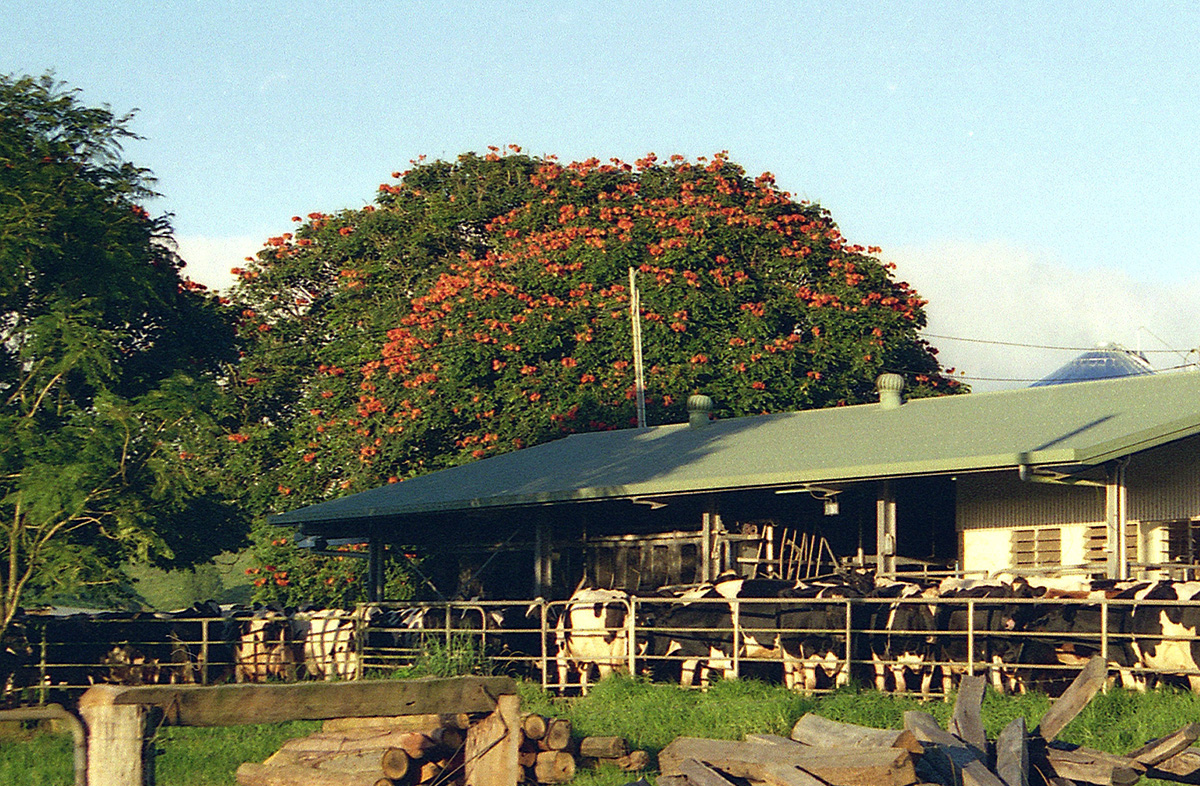 There is clearly a benefit to consumers in both countries from cheaper products, but the gains are likely to be very small. The most optimistic estimate is that the gain in UK GDP will be around 0.01% to 0.02%. Part of the reason is the physical distance between the two countries. For products such as meat, grain and raw materials, shipping costs could be relatively high. This might result in no cost advantage over imports from much nearer countries, such as EU member states.
There is clearly a benefit to consumers in both countries from cheaper products, but the gains are likely to be very small. The most optimistic estimate is that the gain in UK GDP will be around 0.01% to 0.02%. Part of the reason is the physical distance between the two countries. For products such as meat, grain and raw materials, shipping costs could be relatively high. This might result in no cost advantage over imports from much nearer countries, such as EU member states.
But modern trade deals are less about tariffs, which, with various WTO trade rounds, are much lower than in the past. Many imports from Australia are already tariff free, with meat currently having a tariff of 12%. Modern trade deals are more about reducing or eliminating non-tariff barriers, such as differing standards and regulations. This is the area where there is a high degree of concern in the UK. Import-competing sectors, such as farming, fear that their products will be undercut by Australian imports produced to lower standards.
Costs of a trade deal
In a perfectly competitive world, with no externalities, labour mobile between sectors and no concerns about income distribution, eliminating tariffs would indeed provide an efficiency gain. But these conditions do not hold. Small farmers are often unable to compete with food producers with considerable market power. The danger is that by driving out such small farmers, food production and supply might not result in lower long-run prices. Much would depend on the countervailing power of supermarkets to continue bearing down on food costs.
 But the question of price is probably the least worrying issue. Meat and grain is generally produced at lower standards in Australia than in the UK, with various pesticides, fertilisers and antibiotics being used that are not permitted in the UK (and the EU). Unless the trade deal can involve UK standards being enforced on products produced in Australia for export to the UK, UK farmers could be undercut by such imports. The question then would be whether labelling of imported food products could alert consumers to the different standards. And even if they did, would consumers simply prefer to buy the cheaper products? If so, this could be seen as a market failure with consumers not taking into account all the relevant health and welfare costs. Better quality food could be seen as a merit good.
But the question of price is probably the least worrying issue. Meat and grain is generally produced at lower standards in Australia than in the UK, with various pesticides, fertilisers and antibiotics being used that are not permitted in the UK (and the EU). Unless the trade deal can involve UK standards being enforced on products produced in Australia for export to the UK, UK farmers could be undercut by such imports. The question then would be whether labelling of imported food products could alert consumers to the different standards. And even if they did, would consumers simply prefer to buy the cheaper products? If so, this could be seen as a market failure with consumers not taking into account all the relevant health and welfare costs. Better quality food could be seen as a merit good.
Then there are the broader social issues of the protection of rural industries and societies. Labour is relatively immobile from farming and there could be a rise in rural unemployment, which could have local multiplier effects, leading to the decline of rural economies. Rural ways of life could be seriously affected, which imposes costs on local inhabitants and visitors.
Trade itself imposes environmental costs. Even if it were privately efficient to transport products half way around the world, the costs of carbon emissions and other pollution may outweigh any private gains. At a time when the world is becoming increasingly concerned about climate change, and with the upcoming COP26 conference in Glasgow in November, it is difficult to align such a trade deal with a greater commitment to cutting carbon emissions.
Articles
- UK makes free-trade offer to Australia despite farmers’ fears
BBC News (22/5/21)
- UK-Australia trade deal: What are the arguments for and against?
BBC News, Chris Morris (21/5/21)
- Australia–UK trade deal can help spur post-pandemic recovery
The Conversation, David Collins (20/5/21)
- Australia will set the precedent for UK trade deals
Prospect, David Henig (21/5/21)
- Britain beefs with Australian farmers as Boris Johnson backs trade deal
Sydney Morning Herald, Mike Foley and Bevan Shields (20/5/21)
- Boris Johnson defends Australia trade deal that will allow cheap foreign meat imports …
Mail Online, David Wilcock (19/5/21)
- City executives raise concerns over hidden costs to trade deals
Financial Times, Daniel Thomas (22/5/21)
- Australia trade deal: Ministers discuss British farmers’ concerns
BBC News (21/5/21)
- Boris Johnson Faces His First Real Brexit Trade Test
Bloomberg, Therese Raphael (21/5/21)
- UK-Australia trade deal could mean children and patients eating meat reared in ways illegal in UK, warn experts
Independent, Jane Dalton (11/5/21)
- Australian farmers rush to reassure UK over looming free trade agreement
The Guardian, Amy Remeikis (19/5/21)
- Brexit: Boris Johnson warned trade deal with Australia could ‘decimate’ British farming
Independent, Adam Forrest (20/5/21)
- Truss’s naivety on trade with Australia could leave the UK exposed
The Observer, Phillip Inman (22/5/21)
- ‘Irresponsible’ Australia trade deal will bring ruin for UK farmers, critics warn
The Observer, James Tapper and Toby Helm (23/5/21)
- Brexit: Boris Johnson rejects claim UK-Australia trade deal would see farmers ‘lose their livelihoods’
Sky News, Tom Rayner (19/5/21)
- Small farms have a huge role to play in our sustainable future
The Guardian, Charles, Prince of Wales (23/5/21)
- Farmers’ opposition to UK-Australia trade deal grows
BBC News, Claire Marshall (2/6/21)
- UK livestock farmers fear Australia trade deal will threaten way of life
Financial Times, Judith Evans and Sebastian Payne (8/6/21)
- The UK–Australia trade deal is not really about economic gain – it’s about demonstrating post-Brexit sovereignty
The Conversation, Tony Heron and Gabriel Siles-Brügge (18/6/21)
Questions
- Why might the UK government be very keen to sign a trade deal with Australia?
- Does the law of comparative advantage prove that freer trade is more efficient than less free trade? Explain.
- What externalities are involved in the UK trading with Australia? Are they similar to those from trading with the USA?
- If a trade deal resulted in lower food prices but a decline in rural communities, how would you establish whether this would be a ‘price worth paying’?
- If some people gain from a trade deal and others lose and if it were established that the benefits to the gainers were larger than the costs to the losers, would this prove that the deal should go ahead?

 Governments can incentivise individuals and firms through emissions and product taxes, through carbon pricing, through cap-and-trade schemes, through subsidies on green investment, production and consumption, through legal limits on emissions, through trying to change behaviour by education campaigns, and so on. In each case, the extent to which individuals and firms will respond is hard to predict. People may want to reduce global warming and yet be reluctant to change their own behaviour, seeing themselves as too insignificant to make any difference and blaming big business, governments or rich individuals. It is important, therefore, for governments to get incentive mechanisms right to achieve the stated targets.
Governments can incentivise individuals and firms through emissions and product taxes, through carbon pricing, through cap-and-trade schemes, through subsidies on green investment, production and consumption, through legal limits on emissions, through trying to change behaviour by education campaigns, and so on. In each case, the extent to which individuals and firms will respond is hard to predict. People may want to reduce global warming and yet be reluctant to change their own behaviour, seeing themselves as too insignificant to make any difference and blaming big business, governments or rich individuals. It is important, therefore, for governments to get incentive mechanisms right to achieve the stated targets. The chart shows the 15 countries providing the largest amount of support to fossil fuel industries in 2020 (in 2021 prices). The bars are in billions of dollars and the percentage of GDP is also given for each country. Subsidies include both production and consumption subsidies. (Click here for a PowerPoint of the chart.) In addition to the direct subsidies shown in the chart, there are the indirect costs of subsidies, including pollution, environmental destruction and the impact on the climate. According to the IMF, these amounted to $5.4 trillion in 2020.
The chart shows the 15 countries providing the largest amount of support to fossil fuel industries in 2020 (in 2021 prices). The bars are in billions of dollars and the percentage of GDP is also given for each country. Subsidies include both production and consumption subsidies. (Click here for a PowerPoint of the chart.) In addition to the direct subsidies shown in the chart, there are the indirect costs of subsidies, including pollution, environmental destruction and the impact on the climate. According to the IMF, these amounted to $5.4 trillion in 2020. The first draft of the conference agreement called for countries to ‘to accelerate the phasing-out of coal and subsidies for fossil fuels’. But, after objections from major coal producing countries, such as China, India and Australia, this was weakened to calling on countries to accelerate the shift to clean energy systems ‘by scaling up the deployment of clean power generation and energy efficiency measures, including accelerating efforts towards the phasedown of unabated coal power and phase-out of inefficient fossil fuel subsidies’. (‘Unabated’ coal power refers to power generation with no carbon capture.) Changing ‘phasing-out’ to ‘the phasedown’ caused consternation among many delegates who saw this as a substantial weakening of the drive to end the use of coal.
The first draft of the conference agreement called for countries to ‘to accelerate the phasing-out of coal and subsidies for fossil fuels’. But, after objections from major coal producing countries, such as China, India and Australia, this was weakened to calling on countries to accelerate the shift to clean energy systems ‘by scaling up the deployment of clean power generation and energy efficiency measures, including accelerating efforts towards the phasedown of unabated coal power and phase-out of inefficient fossil fuel subsidies’. (‘Unabated’ coal power refers to power generation with no carbon capture.) Changing ‘phasing-out’ to ‘the phasedown’ caused consternation among many delegates who saw this as a substantial weakening of the drive to end the use of coal.  Transitioning to a low-carbon economy and investing in measures to protect people from rising sea levels, floods, droughts, fires, etc. costs money. With many developing countries facing serious financial problems, especially in the light of measures to support their economies and healthcare systems to mitigate the effects of COVID-19, support is needed from the developed world.
Transitioning to a low-carbon economy and investing in measures to protect people from rising sea levels, floods, droughts, fires, etc. costs money. With many developing countries facing serious financial problems, especially in the light of measures to support their economies and healthcare systems to mitigate the effects of COVID-19, support is needed from the developed world. Again, more than 100 countries agreed to stop deforestation by 2030. These countries include Indonesia and Brazil, which has been heavily criticised for allowing large parts of the Amazon rainforest to be cleared for farming, such that the Amazon region in recent years has been a net emitter of carbon from the felling and burning of trees. The pledge has been met with considerable cynicism, however, as it unclear how it will be policed. Much of the deforestation around the world is already illegal but goes ahead anyway.
Again, more than 100 countries agreed to stop deforestation by 2030. These countries include Indonesia and Brazil, which has been heavily criticised for allowing large parts of the Amazon rainforest to be cleared for farming, such that the Amazon region in recent years has been a net emitter of carbon from the felling and burning of trees. The pledge has been met with considerable cynicism, however, as it unclear how it will be policed. Much of the deforestation around the world is already illegal but goes ahead anyway. Blah, blah, blah or real action?
Blah, blah, blah or real action? What’s in the COP26 deal – and will it save humanity?
What’s in the COP26 deal – and will it save humanity? Cop26: where does the world go from here?
Cop26: where does the world go from here? What is net zero?
What is net zero? Ros Atkins On: The Challenge of Net Zero
Ros Atkins On: The Challenge of Net Zero What is carbon trading?
What is carbon trading? Many economists argue that the most effective policy for dealing with climate change is carbon pricing. This reduces greenhouse gas (GHG) emissions in a way that minimises the costs to the economy.
Many economists argue that the most effective policy for dealing with climate change is carbon pricing. This reduces greenhouse gas (GHG) emissions in a way that minimises the costs to the economy. The UK Emissions Trading Scheme – an example of a cap-and-trade scheme – clearly places a price on GHG emissions. As this price is determined by market forces it can vary on a daily basis. The scheme applies to electricity generation and other energy-intensive industries that account for approximately 30 per cent of all emissions.
The UK Emissions Trading Scheme – an example of a cap-and-trade scheme – clearly places a price on GHG emissions. As this price is determined by market forces it can vary on a daily basis. The scheme applies to electricity generation and other energy-intensive industries that account for approximately 30 per cent of all emissions. The impact of government policy on UK households creates quite perverse incentives. Because of the lower rates of VAT, families receive an implicit subsidy of £24 per tonne CO2e when they use gas to heat their homes. When they use electricity, the source of energy that generates less emissions, they face a positive price of £137 per tonne of CO2e. Once again, the response to these incentives is unsurprising. Household emissions only fell by a relatively small amount between 1990 and 2018 because of the continued use of gas for heating and cooking.
The impact of government policy on UK households creates quite perverse incentives. Because of the lower rates of VAT, families receive an implicit subsidy of £24 per tonne CO2e when they use gas to heat their homes. When they use electricity, the source of energy that generates less emissions, they face a positive price of £137 per tonne of CO2e. Once again, the response to these incentives is unsurprising. Household emissions only fell by a relatively small amount between 1990 and 2018 because of the continued use of gas for heating and cooking. The development of open-source software and blockchain technology has enabled people to ‘hack’ capitalism – to present and provide alternatives to traditional modes of production, consumption and exchange. This has enabled more effective markets in second-hand products, new environmentally-friendly technologies and by-products that otherwise would have been negative externalities.
The development of open-source software and blockchain technology has enabled people to ‘hack’ capitalism – to present and provide alternatives to traditional modes of production, consumption and exchange. This has enabled more effective markets in second-hand products, new environmentally-friendly technologies and by-products that otherwise would have been negative externalities.  The changes are built on new attitudes and new technologies. New attitudes include regarding nature and the land as living resources that need respect. This would involve moving away from monocultures and deforestation and, with appropriate technologies (old and new), could lead to greater output, greater equality within agriculture and increased carbon absorption. The podcast gives examples from the developing and developed world of successful moves towards smaller-scale and more diversified agriculture that are much more sustainable. The rise in farmers’ markets provides an important mechanism to drive both demand and supply.
The changes are built on new attitudes and new technologies. New attitudes include regarding nature and the land as living resources that need respect. This would involve moving away from monocultures and deforestation and, with appropriate technologies (old and new), could lead to greater output, greater equality within agriculture and increased carbon absorption. The podcast gives examples from the developing and developed world of successful moves towards smaller-scale and more diversified agriculture that are much more sustainable. The rise in farmers’ markets provides an important mechanism to drive both demand and supply. These problems were made worse by the response to the financial crisis of 2007–8, when governments chose to save the existing model of capitalism by propping up financial markets through quantitative easing, which massively inflated asset prices and aggravated the problem of inequality. They missed the opportunity of creating money to invest in alternative technologies and infrastructure.
These problems were made worse by the response to the financial crisis of 2007–8, when governments chose to save the existing model of capitalism by propping up financial markets through quantitative easing, which massively inflated asset prices and aggravated the problem of inequality. They missed the opportunity of creating money to invest in alternative technologies and infrastructure. A final hack is one that can directly tackle the problem of externalities – one of the greatest weaknesses of conventional capitalism. New technologies can support ways of rewarding people for reducing external costs, such as paying indigenous people for protecting the land or forests. Carbon markets have been developed in recent years. Perhaps the best example is the European Emissions Trading Scheme (EMS). But so far they have been developed in isolation. If the revenues generated could go directly to those involved in environmental protection, this would help further to internalise the externalities. The podcasts gives an example of a technology used in the Amazon to identify the environmental benefits of protecting rain forests that can then be used to allow reliable payments to the indigenous people though blockchain currencies.
A final hack is one that can directly tackle the problem of externalities – one of the greatest weaknesses of conventional capitalism. New technologies can support ways of rewarding people for reducing external costs, such as paying indigenous people for protecting the land or forests. Carbon markets have been developed in recent years. Perhaps the best example is the European Emissions Trading Scheme (EMS). But so far they have been developed in isolation. If the revenues generated could go directly to those involved in environmental protection, this would help further to internalise the externalities. The podcasts gives an example of a technology used in the Amazon to identify the environmental benefits of protecting rain forests that can then be used to allow reliable payments to the indigenous people though blockchain currencies. For many goods and services, economists argue that relatively unregulated markets often do a pretty good job in delivering desirable outcomes from society’s view point.
For many goods and services, economists argue that relatively unregulated markets often do a pretty good job in delivering desirable outcomes from society’s view point.
 One specific proposal made by the Environmental Audit Committee was for the government to consider extending this new tax to textiles that contain less than 50 per cent recycled polyester. A recent study found that just under 50 per cent of clothes for sale on leading online websites were made entirely from new plastics.
One specific proposal made by the Environmental Audit Committee was for the government to consider extending this new tax to textiles that contain less than 50 per cent recycled polyester. A recent study found that just under 50 per cent of clothes for sale on leading online websites were made entirely from new plastics. The UK and Australia are set to sign a free-trade deal at the G7 summit in Cornwall on 11–13 June. This will eventually give tariff-free access to each other’s markets, with existing tariffs being phased out over a 15-year period. It is the first trade deal not based on an existing EU template. The government hopes that it will be followed by trade deals with other countries, including New Zealand, Canada and, crucially, the USA.
The UK and Australia are set to sign a free-trade deal at the G7 summit in Cornwall on 11–13 June. This will eventually give tariff-free access to each other’s markets, with existing tariffs being phased out over a 15-year period. It is the first trade deal not based on an existing EU template. The government hopes that it will be followed by trade deals with other countries, including New Zealand, Canada and, crucially, the USA.  There is clearly a benefit to consumers in both countries from cheaper products, but the gains are likely to be very small. The most optimistic estimate is that the gain in UK GDP will be around 0.01% to 0.02%. Part of the reason is the physical distance between the two countries. For products such as meat, grain and raw materials, shipping costs could be relatively high. This might result in no cost advantage over imports from much nearer countries, such as EU member states.
There is clearly a benefit to consumers in both countries from cheaper products, but the gains are likely to be very small. The most optimistic estimate is that the gain in UK GDP will be around 0.01% to 0.02%. Part of the reason is the physical distance between the two countries. For products such as meat, grain and raw materials, shipping costs could be relatively high. This might result in no cost advantage over imports from much nearer countries, such as EU member states. But the question of price is probably the least worrying issue. Meat and grain is generally produced at lower standards in Australia than in the UK, with various pesticides, fertilisers and antibiotics being used that are not permitted in the UK (and the EU). Unless the trade deal can involve UK standards being enforced on products produced in Australia for export to the UK, UK farmers could be undercut by such imports. The question then would be whether labelling of imported food products could alert consumers to the different standards. And even if they did, would consumers simply prefer to buy the cheaper products? If so, this could be seen as a market failure with consumers not taking into account all the relevant health and welfare costs. Better quality food could be seen as a merit good.
But the question of price is probably the least worrying issue. Meat and grain is generally produced at lower standards in Australia than in the UK, with various pesticides, fertilisers and antibiotics being used that are not permitted in the UK (and the EU). Unless the trade deal can involve UK standards being enforced on products produced in Australia for export to the UK, UK farmers could be undercut by such imports. The question then would be whether labelling of imported food products could alert consumers to the different standards. And even if they did, would consumers simply prefer to buy the cheaper products? If so, this could be seen as a market failure with consumers not taking into account all the relevant health and welfare costs. Better quality food could be seen as a merit good.